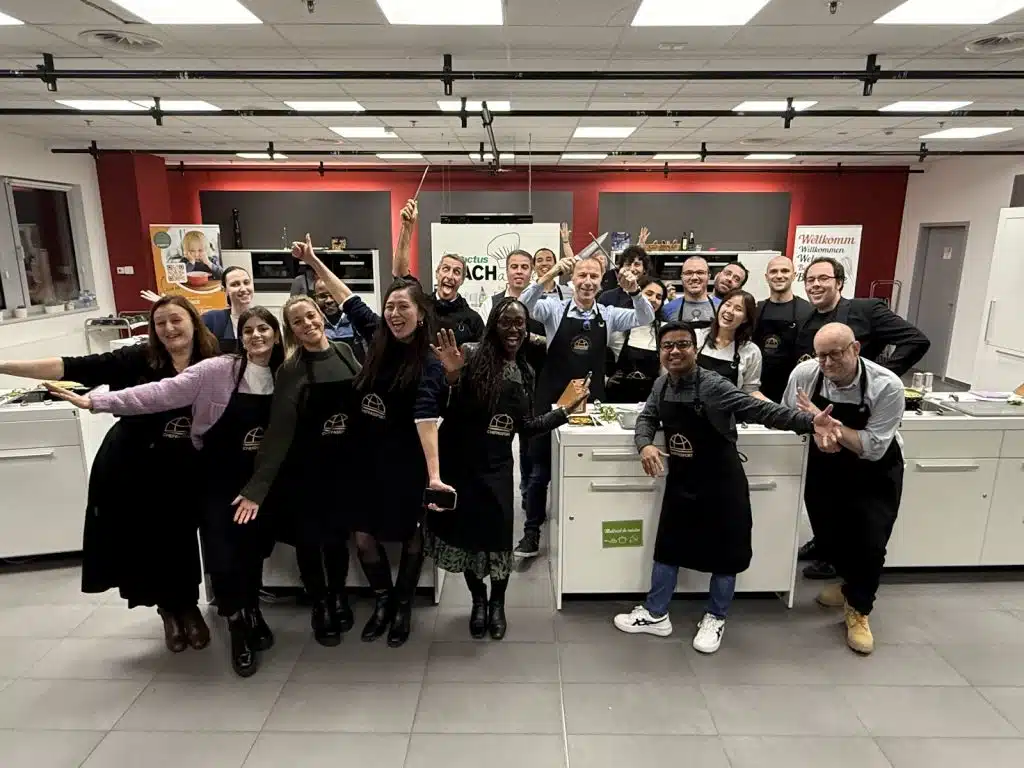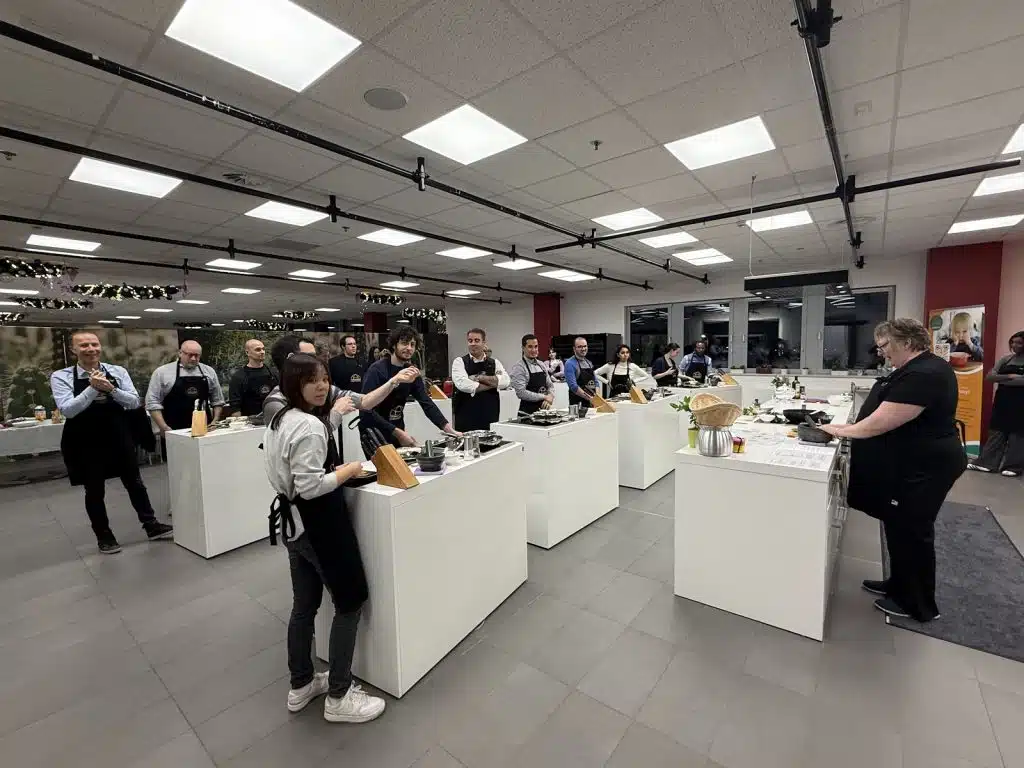Diversity and inclusion icebreakers are activities and games used to encourage conversations and build relationships amongst members of a diverse workforce. These activities can help create an atmosphere of respect, understanding, and collaboration that promotes a diverse and inclusive workplace. Icebreakers can be used to introduce new employees, foster a sense of belonging, and create an environment of trust and understanding.
The Benefits of Using Diversity and Inclusion Icebreakers
Diversity and inclusion icebreakers have many benefits. They can help break down barriers and create an atmosphere of respect and understanding. Icebreakers can also help create a sense of belonging and promote collaboration. Additionally, they can help improve communication and facilitate open dialogue.
Icebreakers can also be used to introduce new employees, help build relationships and trust, and create an atmosphere of understanding and respect. They can also be used to help create a diverse and inclusive workplace.
Types of Diversity and Inclusion Icebreakers
1. Group Introductions
Purpose:
To help participants introduce themselves and share aspects of their backgrounds, interests, and experiences related to diversity.
Step-by-Step Instructions:
- Setup: Prepare a list of prompts that encourage sharing diverse aspects of their identities. Example prompts include:
- “Share a tradition from your culture that you celebrate.”
- “What’s a unique aspect of your background that you’re proud of?”
- Execution: Have each participant introduce themselves using one or more prompts.
- Timing: Allocate 2-3 minutes per participant. For larger groups, split into smaller teams.
Discussion Prompts:
- “What surprised you about what others shared?”
- “How can understanding each other’s backgrounds improve our work environment?”
Real-Life Example:
In a global tech company, this icebreaker was used during a virtual team meeting. Employees shared unique aspects of their cultural backgrounds, leading to the formation of a multicultural team event where employees could showcase their traditions through food, music, and storytelling.
2. Group Discussion
Purpose:
To facilitate conversations around specific diversity and inclusion topics, fostering a deeper understanding among participants.
Step-by-Step Instructions:
- Setup: Choose a relevant topic such as “The importance of allyship in the workplace” or “Addressing unconscious bias.”
- Execution: Divide participants into small groups of 4-5. Assign a facilitator in each group to guide the discussion.
- Timing: Allow 10-15 minutes for discussion followed by a group-wide sharing session.
Discussion Prompts:
- “What challenges have you faced related to this topic?”
- “What strategies can help improve our inclusivity in this area?”
Real-Life Example:
At a marketing firm, the group discussion focused on “How representation in media impacts society.” Teams explored the portrayal of diverse characters in advertisements and shared strategies to ensure their content reflects diverse audiences. This led to a company-wide initiative to audit and improve the inclusivity of their marketing materials.
3. Virtual Cooking Team Building Activities
Purpose:
To foster collaboration and connection among team members through a shared cooking experience that celebrates diverse cuisines.
Step-by-Step Instructions:
- Setup: Choose a theme that reflects the diverse backgrounds of your team, such as “Dishes from Around the World” or “Family Recipes.” Provide a list of simple recipes that participants can choose from, or send out ingredient kits if feasible.
- Execution: Organize a virtual cooking session where team members cook together via video call. A chef will guide the group through the steps, offering tips and encouraging team members to share their own cooking tips or cultural connections to the dish.
- Timing: Allocate 60-90 minutes for the entire activity, including cooking time and a shared meal or tasting session where everyone can showcase their finished dishes.
Discussion Prompts:
- “What did you enjoy most about this cooking experience?”
- “Did you learn anything new about your colleagues through this activity?”
- “How can sharing meals and food traditions improve our team dynamics?”
Real-Life Example:
ChefPassport organized hundreds of virtual cooking class as team building activities. In this case study Salesforce employees from around the globe connected over a shared culinary experience. Participants cooked traditional dishes from various cultures, led by top Chef Instructors who guided them through each step while sharing insights into the origins and significance of the recipes. This interactive and engaging session not only provided a fun break from the usual work routine but also allowed team members to bond over their shared love for food and learning about different cultures. Salesforce reported that the event was a great success, boosting team morale and fostering a deeper sense of inclusivity within their diverse workforce. You can read more about this successful event here.

Looking to bring your team together with an unforgettable culinary experience? ChefPassport is an expert in organizing both virtual and in-person team-building activities that celebrate diversity through cooking. Whether your team is remote or on-site, ChefPassport provides tailored experiences that not only build stronger connections but also highlight the joy of sharing food and culture. Discover how ChefPassport can transform your next virtual team-building or in person team building into a memorable and inclusive cooking experience.
4. Create Problem-Solving
Purpose:
To encourage participants to think creatively and collaboratively about solutions to common diversity challenges.
Step-by-Step Instructions:
- Setup: Present a fictional scenario, such as “A team is struggling with communication issues due to cultural misunderstandings.”
- Execution: Ask teams to brainstorm solutions, focusing on empathy, active listening, and inclusive communication strategies.
- Timing: Allow 15 minutes for brainstorming and 5 minutes per team for sharing their ideas.
Discussion Prompts:
- “What solution do you think is most effective and why?”
- “How can we implement similar strategies in our daily work?”
Real-Life Example:
A financial services company used this icebreaker during a diversity training session. Teams worked on scenarios like “Addressing gender bias in promotions.” The resulting discussions led to actionable changes in the company’s performance review process, such as blind evaluations and more diverse review panels.
5. Role-Playing
Purpose:
To foster empathy by having participants step into the shoes of others.
Step-by-Step Instructions:
- Setup: Create scenarios that involve diversity challenges, such as “A team member feels excluded in meetings due to language barriers.”
- Execution: Participants act out the scenarios, with some playing the role of the person experiencing the challenge and others playing allies or colleagues.
- Timing: Allow 10 minutes per scenario with time for debriefing.
Discussion Prompts:
- “How did it feel to play your role?”
- “What actions can we take to prevent similar situations?”
Real-Life Example:
At an educational institution, role-playing was used to address microaggressions. Participants who played the role of the affected person shared that it opened their eyes to the impact of seemingly small comments, leading to a stronger commitment to mindful communication.
6. Games
Purpose:
To break the ice in a fun, low-pressure way while promoting interaction and inclusivity.
Step-by-Step Instructions:
- Setup: Choose a game like “Diversity Bingo,” where each square represents a different characteristic (e.g., “Speaks more than one language”).
- Execution: Participants mingle to find colleagues who match the characteristics on their Bingo cards.
- Timing: 15-20 minutes.
Discussion Prompts:
- “What did you learn about your coworkers that you didn’t know before?”
- “How can these insights help us work better together?”
Real-Life Example:
In a multinational corporation, Diversity Bingo helped a remote team discover shared experiences like “First in family to attend college” or “Has lived in more than three countries,” leading to deeper connections and respect for diverse journeys.
7. Storytelling
Purpose:
To encourage sharing of personal experiences related to diversity, building empathy and understanding among team members.
Step-by-Step Instructions:
- Setup: Ask participants to share a story related to diversity and inclusion, such as a challenge they’ve faced or a positive change they’ve seen.
- Execution: Each participant shares their story, with others listening actively and reflecting.
- Timing: 5 minutes per story, with discussion afterward.
Discussion Prompts:
- “What themes did you notice in the stories shared?”
- “How can these stories inform our approach to inclusivity?”
Real-Life Example:
At a nonprofit, storytelling sessions allowed employees to share their experiences with systemic inequities. These stories became the basis for a series of workshops designed to address the specific challenges employees had faced, creating a more supportive work environment.
Tips for Implementing Diversity and Inclusion Icebreakers
It is important to consider the following tips when implementing diversity and inclusion icebreakers:
1. Make sure the activity is appropriate for the group.
2. Make sure the activity is inclusive and accessible to all participants.
3. Make sure the activity is appropriate for the amount of time available.
4. Make sure the activity encourages open dialogue and participation.
5. Make sure the activity encourages collaboration and creative problem-solving.
Diversity and inclusion icebreakers can be a great way to start meaningful conversations in the workplace.
These activities help create an atmosphere of respect, understanding, and collaboration that promotes a diverse and inclusive workplace. They can also be used to introduce new employees, foster a sense of belonging, and create an environment of trust and understanding. There are many types of icebreakers, and it is important to make sure the activity is appropriate for the group and encourages open dialogue and participation.
Advantages of Diversity and Inclusion Icebreakers
The term “diversity and inclusion icebreakers” refers to activities which help to create an inclusive and welcoming environment in the workplace. Icebreakers can help to break the ice between employees, reduce tension, and create an atmosphere of openness and understanding.
They can be used to start conversations about topics such as diversity, inclusion, and respect. The goal of diversity and inclusion icebreakers is to create an environment where all employees feel comfortable, accepted, and valued. There are many advantages to using diversity and inclusion icebreakers in the workplace. Here are some of the main benefits of using them:

1. Increased Awareness and Understanding
Diversity and inclusion icebreakers can help to raise awareness and understanding of different cultures, beliefs, and backgrounds in the workplace. This can help to create a more inclusive environment, where all employees feel respected and valued.
2. Improved Communication
Icebreakers can help to make conversations more comfortable and open. This can help to break down any communication barriers between employees, and create an environment where people feel comfortable having meaningful conversations about diversity and inclusion.
3. Increased Employee Engagement
Diversity and inclusion icebreakers can help to engage employees and increase their motivation. Icebreakers can help to create a sense of camaraderie and teamwork, as well as helping to boost morale and create a more positive workplace atmosphere.
4. Improved Productivity
Disadvantages of Diversity and Inclusion Icebreakers
1. Time-Consuming
Icebreakers can take up a lot of time, as they often involve discussions and activities which can take a while to complete. This can be a problem for organizations who need to focus on other tasks, or who have limited resources.
2. Risk of Uncomfortable Conversations
Icebreakers can sometimes lead to uncomfortable conversations between employees, which can create tension and make people feel uncomfortable. It is important to ensure that all employees feel respected and included during these conversations.
3. Risk of Offending
Diversity and inclusion icebreakers can also risk offending some people, as topics such as religion and culture may be sensitive for some. It is important to ensure that all employees feel safe and respected during these activities.
In conclusion, diversity and inclusion icebreakers can be a great way to start meaningful conversations in the workplace.
They can help to create an atmosphere of understanding and respect, as well as helping to boost morale and productivity. However, it is important to be aware of the potential drawbacks, such as the risk of offending people or taking up too much time. It is important to ensure that all employees feel respected and included during these activities.
If you are interested, you can read this article about 6 Tasty Recipes That Showcase the Beauty of Diversity and Inclusion in Food
You can also learn the latest in diversity, equity and inclusion that BCG has for the world.
7 Fun Diversity and Inclusion Icebreakers
The workplace is a great place to foster meaningful conversations about diversity and inclusion. It can be challenging to get people to open up, especially when discussing sensitive topics. Icebreakers provide a great way to break the ice and get conversations going in a comfortable and engaging way. In this article, we’ll explore 7 fun diversity and inclusion icebreakers to help start meaningful conversations in your workplace.
1. Share Your Story
This icebreaker encourages people to share a story about themselves that relates to diversity and inclusion. It can be a story about a time when they or someone else experienced or witnessed discrimination, or a story about a time they overcame adversity. This activity helps to foster understanding and empathy among colleagues, and it can provide people with an opportunity to learn more about each other.
2. Diversity Wheel
3. Two Truths and a Lie
4. Ask and Answer
This icebreaker encourages people to ask and answer questions about diversity and inclusion in the workplace. It helps to create an open dialogue about different topics related to diversity and inclusion, and it can help to identify areas that need improvement in order to create a more inclusive environment.
5. Diversity Bingo
6. Design a Diversity and Inclusion Poster

7. Role-Play
Role-play is a great way to foster empathy and understanding among colleagues. This activity encourages people to act out scenarios related to diversity and inclusion in the workplace. It helps to create an open dialogue about different topics related to diversity and inclusion, and it can help to identify areas that need improvement in order to create a more inclusive environment.
Diversity and inclusion icebreakers can be a great way to start meaningful conversations about diversity and inclusion in the workplace. They can help to foster a more inclusive and understanding environment in which everyone can feel comfortable sharing their opinions and experiences. Icebreakers can also help to create a sense of trust and understanding amongst colleagues. By engaging in activities together, colleagues can bond over shared experiences and become more cohesive as a team.
Conclusion
Diversity and inclusion icebreakers are powerful tools for creating a workplace environment where everyone feels respected, valued, and understood. Whether you’re introducing new employees, breaking down communication barriers, or simply fostering a stronger sense of belonging, these activities can be instrumental in building a more cohesive and inclusive team. By using icebreakers like group introductions, creative problem-solving, and role-playing, you can open up meaningful conversations that promote empathy and collaboration among your team members.
Virtual and in-person cooking classes, offer a unique and engaging way to bring diverse teams together. These experiences not only highlight the beauty of different cultures but also provide a relaxed and enjoyable setting for employees to connect on a personal level. Read more case studies about how other companies incorporated cooking classes into their strategy to build a more positive and inclusive workplace culture.
Ready to elevate your team’s connection and inclusivity? ChefPassport specializes in organizing dynamic virtual and in-person team-building activities that celebrate diversity through the universal language of food. From cooking classes that explore global cuisines to interactive culinary challenges, ChefPassport tailors each experience to fit your team’s unique needs, ensuring that every event is not just a fun activity, but a meaningful opportunity for learning and growth.
Explore how ChefPassport can help your team break the ice and build lasting bonds by visiting our website or contacting us today. Let’s cook up an inclusive and engaging team experience that your employees will love!











